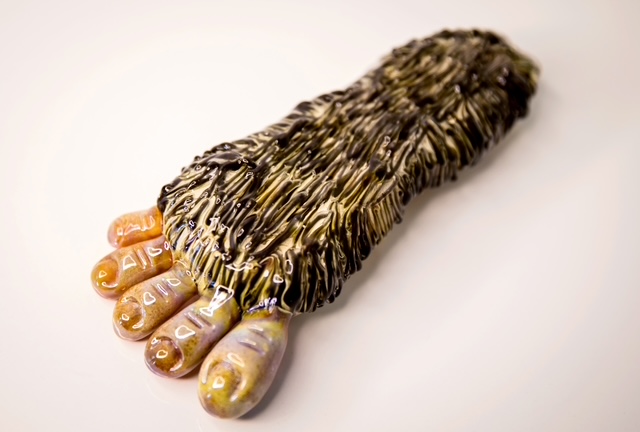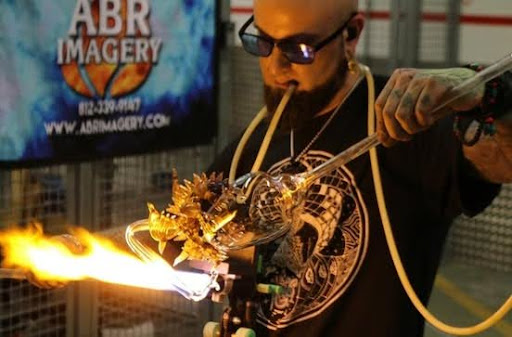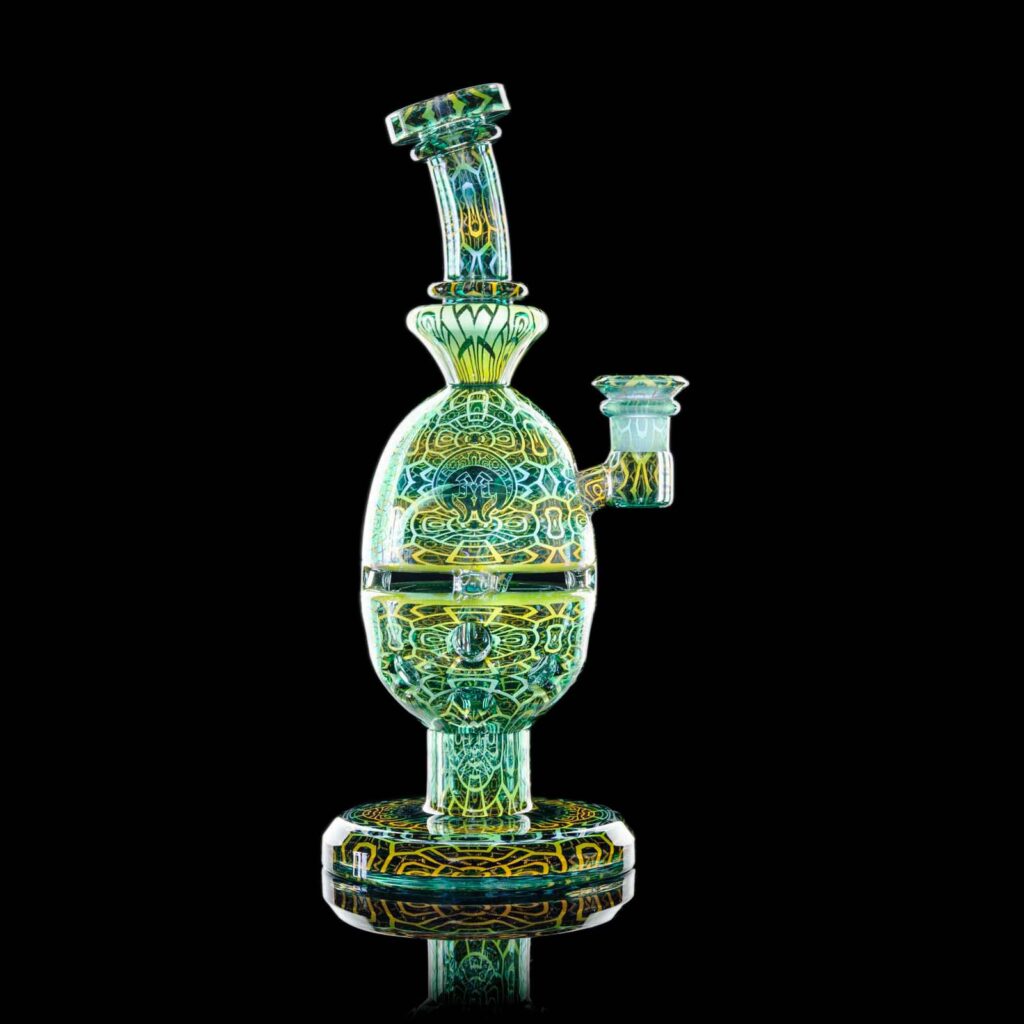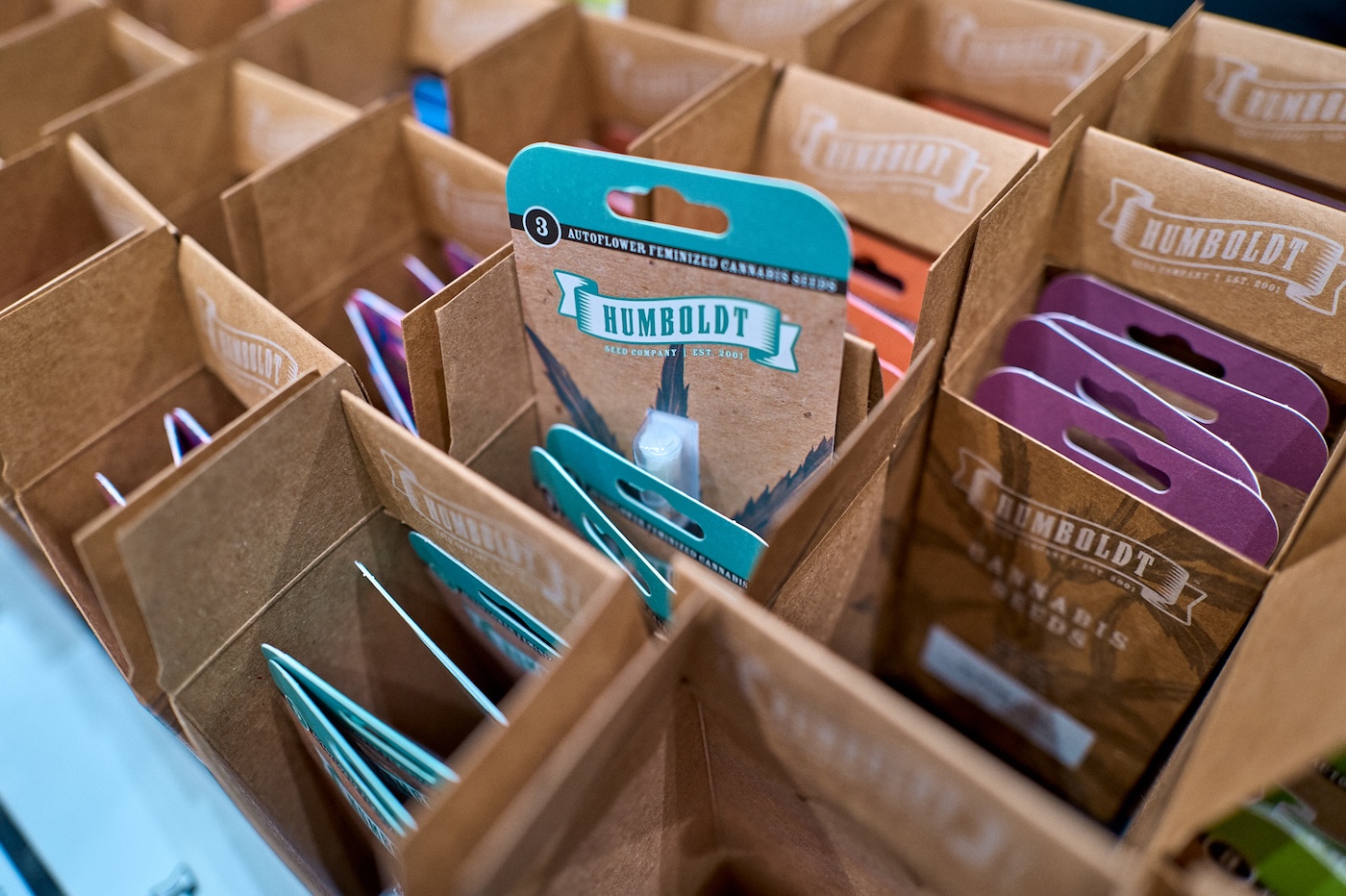
Cannabis and Glassblowing: A Fusion of Art and Culture
Glassblowing has evolved from a niche craft into an essential aspect of cannabis culture, transforming functional smoking tools like bongs and pipes into collectible art pieces. This technique involves shaping molten glass through air-blowing, blending craftsmanship, creativity, and engineering expertise. With a rich history, glassblowing not only enhances the consumption experience but also continues to push the boundaries of contemporary art.
The Art of Glassblowing
As cannabis use surged in popularity during the hippie counterculture movement of the 1960s and 1970s throughout the USA, there was a noticeable increase in the demand for aesthetically pleasing smoking apparatuses. This period not only helped to transform societal attitudes toward cannabis but also inspired a wave of creativity in designing smoking devices, reflecting the cultural shift and evolving perceptions.
Bob Snodgrass is recognized as the originator of the cannabis glass movement. Starting his lampworking journey in 1971 under the guidance of Chuck Murphy, he purchased his first torch in 1974 and began perfecting his craft. Snodgrass gained prominence after touring with the Grateful Dead in the late ’80s, where he introduced his innovative color-changing glass by fuming borosilicate with gold and silver, revolutionizing the glass-blowing scene.
Throughout the 1990s, American glassblowing culture experienced a surge, with several artists pushing the boundaries of functional glass art. Marcel Braun mastered color application and fuming, later establishing The Degenerate Flame Off. Jason Lee pioneered high-end pipes. Chris Carlson introduced the “inside-out” technique, while Kevin O’Grady blended traditional methods with functional pipes, renowned for his intricate patterns.
However, the relationship between cannabis and glass has faced challenges, highlighted by figures like Tommy Chong, who faced legal challenges for selling glass paraphernalia products in the early 2000s despite the booming popularity of “Chong Bongs.” In 2003, the US government launched a $12 million campaign, Operation Pipe Dreams, aimed at banning the sale of bongs, resulting in significant repercussions for 55 retailers in the glass industry.
How is Glass Blown?
To understand the creative process, let’s examine how glass is blown. The journey begins with the preparation of raw materials, primarily silica sand. This silica is blended with sodium dioxide and calcium oxide to reduce its melting point. This mixture, known as the batch, is heated to approximately 1093 °C in a kiln furnace. At this temperature, the batch melts into molten glass, transforming into a thick, viscous liquid ready for shaping.
Once the molten glass reaches the correct viscosity, a skilled lead glassblower gathers a precise amount using a long, hollow blowpipe. This process demands exceptional skill and precision. After gathering the glass, the gaffer shapes it by rolling it on a marver, a flat slab made of metal or stone. This technique is crucial as it helps maintain the glass’s temperature and form, allowing for further manipulation as the glassblowing process continues.
Next, the glassblower begins by collecting molten glass on a hollow blowing pipe. They gently blow into the pipe, creating a small air bubble that forms the core of the piece. This bubble is then shaped through careful manipulation. To add color, the glass is dipped in crushed colored glass or layered with it. Next, a variety of glassblowing tools, such as wooden blocks and jacks, are used to refine the shape of the final glass pipe.
Once the piece has reached the desired shape and color, the gaffer carefully removes it from the blowpipe using jacks. The glass is then placed in an annealing oven for a slow cooling process, which helps its integrity and durability. Rapid cooling can cause the glass to crystallize and become fragile. During the process, the temperature is gradually lowered over several hours, allowing the glass to stabilize into its final form and prepare it for use!
Key Techniques in Glassblowing
Now that you understand the basics of glassblowing, you can see that artists utilize various techniques to create their unique masterpieces. Here are five of the most popular methods.
Blowing and Lathe Work
Blowing is the technique of inflating molten glass into a bubble. This fundamental skill is refined through lathe work, where artisans shape the glowing glass as it rotates. This process enables the creation of hollow cannabis pieces like bongs and dab rigs. The precise control of size and shape ensures these pieces are not only beautiful but also functional.
Pushing and Freehand Flameworking
The pushing technique, which involves using tools to mold molten glass, is complemented by freehand flameworking. Here, artists manipulate the glass with torches to create smooth curves and unique designs that improve both the aesthetics and ergonomics of cannabis accessories. This combination results in one-of-a-kind pieces tailored for the real enthusiast.
Gathering and Inside-Out Technique
The gathering technique in glassblowing involves collecting molten glass from the furnace on a blowpipe and creating a solid gather that serves as the base for the piece. The inside-out technique shapes the gather from the inside, allowing the artist to create intricate designs and patterns on the interior surfaces, enhancing both the aesthetics and functionality.
Molding and Advanced Patterns
Using molds allows glass artists to incorporate intricate features, such as percolators and honeycomb-shaped filters, which enhance functionality by ensuring smoother hits. Techniques like Wig Wag and Reversal Patterns can also be incorporated, allowing dynamic designs that mesmerize cannabis enthusiasts with their color shifts and intricate patterns.
Fuming Technique
The fuming method, popularized by Bob Snodgrass, enhances the appeal of glass by vaporizing metallic compounds, such as silver, gold, or platinum, in front of an open flame. This process releases fumes that bind to the glass surface, creating unique designs. While commonly used in various glass items, it looks incredible in bongs, dab rigs, and pipes.
By incorporating these techniques, artists craft beautiful, functional cannabis accessories that reflect their unique style and lively cannabis culture. This blend of artistry and practicality not only highlights the skill and creativity of glassblowers but also enriches the overall experience for cannabis users, demonstrating a unique connection between them.
Showcasing Four Remarkable Artists: The Finest of the Finest
Glassblowing is a remarkable expression of craftsmanship, so join us as we explore the inspiring journeys of four talented glassblowers, each celebrated for their distinctive techniques and breathtaking creations. Discover how their artistry transforms molten glass into stunning masterpieces, and prepare to be mesmerized by the magic they conjure.
1. Mothership Glass (Scott Deppe)
Scott Deppe’s journey into glass art began in Idaho before he eventually settled in Bellingham, Washington. His passion was ignited when he saw a stunning glass pipe at a Grateful Dead concert in 1993. Inspired by this captivating experience, Deppe dove into the art form, fully committing himself to learning and creating. After taking just one glass class from Brian Kerkvliet, he began to explore the endless possibilities the craft had to offer.
Over the past thirty years in the functional glass art scene, Deppe has skillfully blended artistic vision with traditional glassblowing techniques. He has mastered methods such as Reticello and disk flips, while developing innovative approaches that leverage sacred geometry. Recently, his creations have featured silver- and gold-fumed hologram glass, transforming his work into intricate, illustrative tapestries that mesmerize viewers.
As a co-founder of Mothership Glass, Scott Deppe is renowned for his precision and technical complexity. His creations beautifully blend sci-fi, psychedelic, and sacred geometry aesthetics, featuring intricate faceted designs and innovative sandblasting methods. Noteworthy pieces, such as the Fabergé Egg and collaborations with artists like Banjo and Buck, have set industry standards, elevating Mothership Glass to an esteemed status.
2. Psychedelic Sasquatch (Adam Kellermeyer)
Psychedelic Sasquatch is the artistic alias of Adam Kellermeyer, an accomplished glassblower based in Florida. Standing at 6’6″, he embodies the “Sasquatch” persona and is often seen wearing Bigfoot-themed attire. Originally from Columbus, Ohio, Kellermeyer moved to California in early 2012 to pursue his dream of becoming a renowned glass artist. There, he immersed himself in the vibrant glass-blowing community, honing his skills.

Talking with Kellermeyer, he explains, “Sasquatch became the face of that expression—part myth, part mirror. It’s not just a theme in my work; it’s my persona, my creative identity. The mystery, the wildness, the outsider energy—it all speaks to how I see myself and what I want my art to represent. Each piece blends folklore and fire, cannabis culture and craftsmanship. Through glass and flame, I get to bring that creature—and my own story—to life.”
Kellermeyer’s portfolio features unique creations inspired by Bigfoot, including intricately designed head pendants and pipes. His works strike a balance between functionality and artistic flair, appealing to both collectors and avid cannabis enthusiasts. An advocate for psychedelics, especially mushrooms, he plans to expand the Sasquatch universe in 2025, crafting high-end glass art that combines folklore with storytelling and artistic progression.
3. Buck Glass
Ryan “Buck” Harris is a glass artist who resides in the serene Oregon forest, where he draws endless inspiration from the natural beauty around him. With over 20 years of experience, he is well-known for creating stunning anatomical skeletons, eye-catching chandeliers, and intricate sculptures. His collection of borosilicate glass is among the largest, and his talent has been recognized worldwide, with exhibitions from New York to Australia.
In January 2024, Buck achieved a significant milestone with his inaugural functional glass art piece, the Triceratops, which was installed at the Museum of Glass in Tacoma, WA. This pipe, meticulously crafted in his Oregon studio, demonstrates Buck’s extraordinary talent and creativity. As the first of its kind included in a museum’s Permanent Collection, the Triceratops represents the fusion of functional art and exquisite craftsmanship.
Harris is a renowned artist in the field of functional glass art, recognized for his self-taught style that highlights meticulous attention to detail in color, shape, optics, and symmetry. Mastering borosilicate glass, he creates custom colors that embody his unique vision and feature intricate designs. His work invites viewers to explore the harmonious blend of artistry and technical skill, leaving a lasting impression on everyone who encounters it.
4. PolteGlass
PolteGlass is a Finnish glassblower known for his innovative and intricate glass art. His portfolio skillfully merges traditional craftsmanship with contemporary design, showcasing the rich heritage of Finnish glassmaking. He has competed in three European Flame-Off competitions, achieving third place in the People’s Choice category in 2022 and second place in 2024, which demonstrates his truly exceptional talents and creative abilities.

Polte met seasoned glass artist Phil Sundling in Austria in 2023 and invited him to visit Prism Glassworks in Troy, New York. During his time there, they collaborated to create a stunning custom fire-themed bong featuring an opal mouthpiece and a psychedelic forest scene that is genuinely mesmerizing. PolteGlass shares his latest creations on Instagram, contributing to the evolution of contemporary glass art both in Finland and internationally.

Speaking to PolteGlass, he states, “In Finland, for many like myself, the bond between cannabis and glassblowing is profoundly personal, as many see the herb primarily as a medicine. Although the community may be small, it’s passionate, balancing tradition with innovation. Influenced by legendary pipe makers, many artists are inspired to push their creative boundaries, ensuring that despite challenges, Finnish glass art continues to evolve.”
Challenges and Opportunities for Emerging Artists
Glassblowing has made significant progress over the years. Previously hindered by legal issues and societal stigma, artists often struggled to express their creativity openly. Even though decriminalization efforts are happening in many states, complex regulations and remaining stigma still create barriers to production and sales in states like Idaho and Nebraska. Despite these ongoing challenges, the glass industry continues to evolve with increasing recognition.
As cannabis legalization spreads globally, exciting opportunities for innovation and growth are emerging. The demand for unique, artisanal glass pieces for consumption is on the rise, with talented artists showcasing their creativity and exploring new techniques through social media. This vibrant community not only embodies the spirit of the cannabis movement but also underscores the importance of community support and high-quality craftsmanship.
The Future of Glassblowing?
The future of glass design is set to be exciting, with innovations in materials like borosilicate glass enhancing durability and functionality. We can anticipate breakthroughs in percolation and filtration systems, alongside the rise of smart bongs that incorporate technology into the smoking experience. As cannabis gains acceptance, the cultural significance of bongs will grow, blending artistry with functionality and celebrating the community’s creativity.
Discover the beauty of glass art by our talented featured artists! Follow us on Instagram and support local glassblowers; your encouragement helps their craft thrive.











